Key Takeaways
1. Scrum is an iterative, empirical framework that maximizes value through transparency, inspection, and adaptation
Scrum is an empirical exposure model, which means knowledge is gained from real-life experience, and decisions are made based on that experience.
Empirical process control. Scrum is founded on three pillars:
- Transparency: Information is visible and accessible to all involved
- Inspection: Regular checkpoints to examine progress and results
- Adaptation: Ability to make changes based on inspection findings
Scrum enables teams to:
- Deliver high-quality products quickly and efficiently
- Respond effectively to changing requirements and priorities
- Continuously improve processes and outcomes
By breaking work into short iterations and regularly seeking feedback, Scrum allows teams to learn and adapt rapidly, maximizing value delivery.
2. The Scrum team consists of three key roles: Product Owner, Scrum Master, and Development Team
No single person or role is above another. Everyone is a peer; no one is a boss or underling. "We" is the operative word rather than "I."
Key Scrum roles:
- Product Owner: Responsible for maximizing product value and managing the Product Backlog
- Scrum Master: Facilitates the Scrum process and removes impediments
- Development Team: Self-organizing group that creates the product increments
The Scrum Team is:
- Cross-functional: Possessing all skills necessary to create product increments
- Self-organizing: Deciding how best to accomplish their work
- Collaborative: Working together towards a common goal
These roles work together as equals, each with distinct responsibilities but all committed to the success of the project. The flat structure promotes ownership, accountability, and effective communication.
3. The Product Backlog is the prioritized list of all work to be done, owned by the Product Owner
The product backlog is a true scrum artifact and the master to-do list for the entire project. All scrum projects have product backlogs, and they are owned and maintained by the product owner.
Dynamic prioritization. The Product Backlog:
- Is constantly evolving based on new information and feedback
- Contains all features, functions, requirements, enhancements, and fixes
- Is ordered by the Product Owner based on value, risk, and dependencies
Key aspects of the Product Backlog:
- Items at the top are more detailed and ready for upcoming Sprints
- Lower priority items are less refined and may be more general
- It is transparent and accessible to all stakeholders
The Product Owner collaborates with stakeholders and the Development Team to refine and prioritize backlog items, ensuring the most valuable work is done first.
4. Sprints are fixed time-boxes where work is completed and potentially shippable product increments are created
Sprints are the essence of scrum, as I discuss in Chapter 1. They are a consistent timebox for product development by the development team.
Time-boxed iterations. Sprints typically last 1-4 weeks and include:
- Sprint Planning: Team selects and plans work for the Sprint
- Daily Scrums: Brief daily sync meetings
- Development work: Creating product increments
- Sprint Review: Demonstrating completed work to stakeholders
- Sprint Retrospective: Team reflects on process and identifies improvements
Benefits of Sprints:
- Provide rhythm and predictability to the development process
- Limit risk to the length of one Sprint
- Force regular prioritization and decision-making
- Deliver potentially shippable product increments frequently
Sprints enable teams to work in focused bursts, regularly deliver value, and adapt quickly to changes or new information.
5. Daily Scrums, Sprint Reviews, and Sprint Retrospectives provide regular opportunities for inspection and adaptation
Inspect and adapt constantly. Only build what's most important, and test and garner feedback regularly and frequently.
Regular feedback loops. Key Scrum events:
- Daily Scrum: 15-minute daily team sync to plan the next 24 hours
- Sprint Review: End-of-Sprint meeting to inspect the increment and adapt the Product Backlog
- Sprint Retrospective: Team reflects on their process and plans improvements
These events allow teams to:
- Identify and address impediments quickly
- Gather stakeholder feedback and adjust priorities
- Continuously improve their processes and ways of working
By building in regular opportunities for inspection and adaptation, Scrum teams can respond quickly to changes, reduce risk, and continuously improve their effectiveness.
6. Scrum can be applied beyond software development to various industries and personal projects
Absolutely any project — large, small, tech, artistic, social, personal — all can be productively placed within the scrum framework.
Versatile framework. Scrum has been successfully applied to:
- Manufacturing and hardware development
- Marketing and sales
- Education and research
- Personal and family projects
- Healthcare and government services
Examples of Scrum in diverse contexts:
- Construction projects using Sprints to coordinate subcontractors
- Marketing teams adapting campaigns based on real-time data
- Families using Scrum to plan vacations or manage household tasks
The principles of transparency, inspection, and adaptation can benefit any complex project or process that requires flexibility and continuous improvement.
7. Scrum emphasizes self-organizing teams, continuous improvement, and delivering value early and often
People want to do good work; it's in our wiring. If you seek the positive, you'll find the positive. Just as if you seek the negative, you'll find the negative. Respect is the burning ember of positivity.
Empowered teams. Scrum promotes:
- Self-organization: Teams decide how to accomplish their work
- Continuous improvement: Regular retrospectives to refine processes
- Early and frequent value delivery: Potentially shippable increments every Sprint
Key benefits of the Scrum approach:
- Increased motivation and job satisfaction
- Higher quality products through frequent feedback and adaptation
- Reduced risk through incremental development and regular stakeholder involvement
- Improved predictability and transparency of progress
By trusting teams to organize their own work, fostering a culture of continuous improvement, and focusing on delivering value early and often, Scrum enables organizations to be more adaptive, effective, and successful in complex environments.
Last updated:
FAQ
1. What is "Scrum for Dummies" by Mark C. Layton about?
- Comprehensive Scrum Overview: The book is a practical guide to the Scrum framework, explaining its roles, artifacts, and events, and how it can be applied to projects beyond software development.
- Versatility and Adaptability: Mark C. Layton demonstrates how Scrum is useful in diverse fields such as IT, healthcare, education, publishing, military, and even personal life.
- Focus on Empiricism: The book emphasizes Scrum’s core principle of inspect and adapt, using iterative cycles and continuous feedback to drive improvement and value.
- Real-World Examples: It includes case studies from Fortune 100 companies, government agencies, and everyday scenarios to illustrate Scrum’s effectiveness.
2. Why should I read "Scrum for Dummies" by Mark C. Layton?
- Broad Applicability: The book shows how Scrum can benefit professionals in IT, business, education, healthcare, and even families and individuals managing personal goals.
- Proven Results: Layton explains how Scrum can reduce time to market by 30-40%, lower costs by 30-70%, and improve product quality and customer satisfaction.
- Accessible and Practical: Written for both beginners and experienced practitioners, the book offers step-by-step guidance, success stories, and actionable advice.
- Personal and Professional Growth: Readers learn how to implement Scrum for both work projects and personal life, making it a valuable resource for anyone seeking better results and efficiency.
3. What are the key takeaways from "Scrum for Dummies" by Mark C. Layton?
- Scrum Fundamentals: Understanding the three roles, three artifacts, and five events that form the backbone of Scrum.
- Inspect and Adapt: Embracing continuous feedback, transparency, and iterative progress to deliver value and respond to change.
- Scalability and Versatility: Scrum’s principles can be scaled for large organizations and adapted for non-software industries and personal use.
- Common Pitfalls and Solutions: The book highlights mistakes to avoid, such as “faux Scrum,” and provides strategies for successful adoption and transition.
4. What are the main roles, artifacts, and events in the Scrum framework as described by Mark C. Layton?
- Three Roles: Product Owner (business needs and prioritization), Scrum Master (process facilitator and impediment remover), and Development Team (cross-functional product creators).
- Three Artifacts: Product Backlog (prioritized requirements), Sprint Backlog (tasks for the current sprint), and Increment (shippable product at sprint end).
- Five Events: Sprint, Sprint Planning, Daily Scrum, Sprint Review, and Sprint Retrospective, all designed to foster transparency, inspection, and adaptation.
- Equal and Independent Roles: Each role is equal in status but independent in function, ensuring clear accountability and collaboration.
5. How does "Scrum for Dummies" by Mark C. Layton explain the concept of inspect and adapt?
- Core Principle: Inspect and adapt is central to Scrum, involving regular review of both product and process to drive continuous improvement.
- Sprint Reviews: At the end of each sprint, teams demonstrate completed work to stakeholders, gather feedback, and adjust the product backlog.
- Sprint Retrospectives: Teams reflect on their collaboration and processes, identifying ways to improve in the next sprint.
- Application Beyond Software: The book shows how this principle helps organizations and families adapt to change and improve outcomes in any context.
6. What is the “roadmap to value” in Scrum according to Mark C. Layton, and what are its stages?
- Seven Stages: The roadmap to value guides a project from vision to actionable tasks through vision statement, product roadmap, release planning, sprint planning, daily scrum, sprint review, and sprint retrospective.
- Vision as Beacon: The vision statement provides strategic direction and clarity for the team.
- Iterative Breakdown: Each stage breaks the project into smaller, manageable pieces, enabling incremental delivery and adaptation.
- Continuous Inspection: Regular feedback and adaptation at each stage ensure the team stays aligned with business goals and customer needs.
7. What are the five Scrum values and why are they important in "Scrum for Dummies" by Mark C. Layton?
- Commitment: Team members are fully dedicated to achieving realistic goals, empowered by Scrum’s structure.
- Focus: Scrum encourages working on a few prioritized goals at a time, reducing distractions and maximizing productivity.
- Openness: Transparency in work and progress fosters trust and effective communication.
- Respect and Courage: Mutual respect among team members and the courage to challenge old habits and embrace change are essential for Scrum success.
8. How does Mark C. Layton define the role and responsibilities of the Product Owner in Scrum?
- Business-Side Leadership: The Product Owner maximizes product value by managing the product backlog, setting vision, and prioritizing requirements.
- Single Point of Accountability: This role represents stakeholders and customers, making trade-off decisions and accepting or rejecting completed work.
- Full-Time Dedication: The Product Owner is a dedicated member of the Scrum team, ensuring alignment between business and development.
- Facilitator of Alignment: They enable the development team to focus on delivering the right product without distractions.
9. What practical advice does "Scrum for Dummies" by Mark C. Layton offer for managing the Product Backlog?
- Dynamic Master List: The Product Backlog is a living document, continuously refined and reprioritized by the Product Owner.
- Decomposition and Prioritization: Large features are broken down into small, actionable user stories, focusing on highest value and risk first.
- INVEST Criteria: User stories should be Independent, Negotiable, Valuable, Estimable, Small, and Testable.
- Regular Refinement: Backlog refinement sessions with the development team ensure clarity and readiness for upcoming sprints.
10. How does "Scrum for Dummies" by Mark C. Layton describe the sprint cycle and its planning?
- Fixed Timebox: Sprints are consistent cycles (usually 1-2 weeks) where the team plans, develops, tests, and delivers potentially shippable increments.
- Sprint Planning Phases: Phase I sets the sprint goal and selects backlog items; Phase II breaks items into tasks with estimates for daily self-organization.
- Sprint Backlog and Burndown: The sprint backlog lists prioritized tasks, and burndown charts visually track daily progress.
- Adaptation and Focus: The team adapts as needed to stay on target and achieve the sprint goal.
11. How does Mark C. Layton address scaling Scrum for large organizations in "Scrum for Dummies"?
- Vertical Slicing: Multiple Scrum teams work on different modules in synchronized sprints, coordinated by an integration team.
- Frameworks for Scaling: The book explains Scaled Agile Framework (SAFe) and Large-Scale Scrum (LeSS) for managing portfolios, programs, and multiple teams.
- Scrum of Scrums: Daily coordination meetings among team representatives facilitate communication and impediment removal across teams.
- Role Specialization: Roles like Epic Owners and Agile Release Trains help manage complexity and ensure alignment at scale.
12. What are common pitfalls to avoid when implementing Scrum, according to "Scrum for Dummies" by Mark C. Layton?
- Faux Scrum: Avoid “cargo cult agile,” where Scrum events are performed without embracing agile principles, leading to inefficiency and burnout.
- Ineffective Product Owner: An absent or indecisive Product Owner can derail projects; the role requires time, expertise, and training.
- Lack of Training and Support: Without proper training and organizational backing, teams may revert to old habits and fail to realize Scrum’s benefits.
- Poor Team Selection: Teams must be cross-functional, colocated, and supported by a clear Definition of Done to succeed.
Review Summary
Scrum for Dummies receives mixed reviews, with an average rating of 3.71 out of 5. Some readers find it informative and a good introduction to Scrum methodology, praising its easy language and examples. Others criticize excessive repetition and lack of real-world applications. The book's attempt to apply Scrum beyond software development is controversial, with some appreciating the versatility while others question its practicality. Readers value the background information on Agile principles but debate the effectiveness of Scrum in various organizational contexts. Overall, it's seen as a solid primer for those new to Scrum.
Similar Books



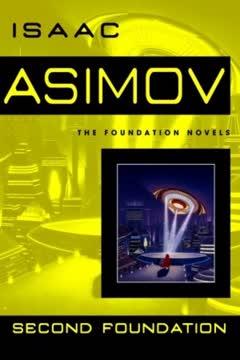

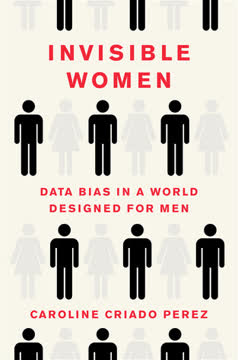
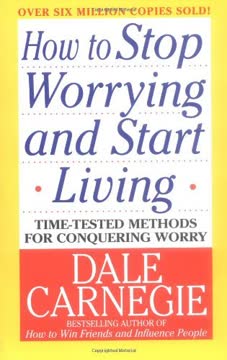
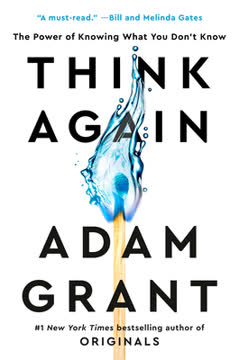
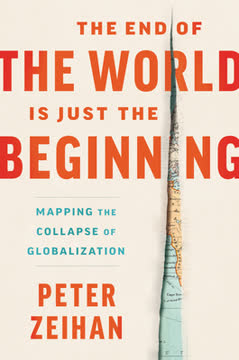

Download PDF
Download EPUB
.epub digital book format is ideal for reading ebooks on phones, tablets, and e-readers.




